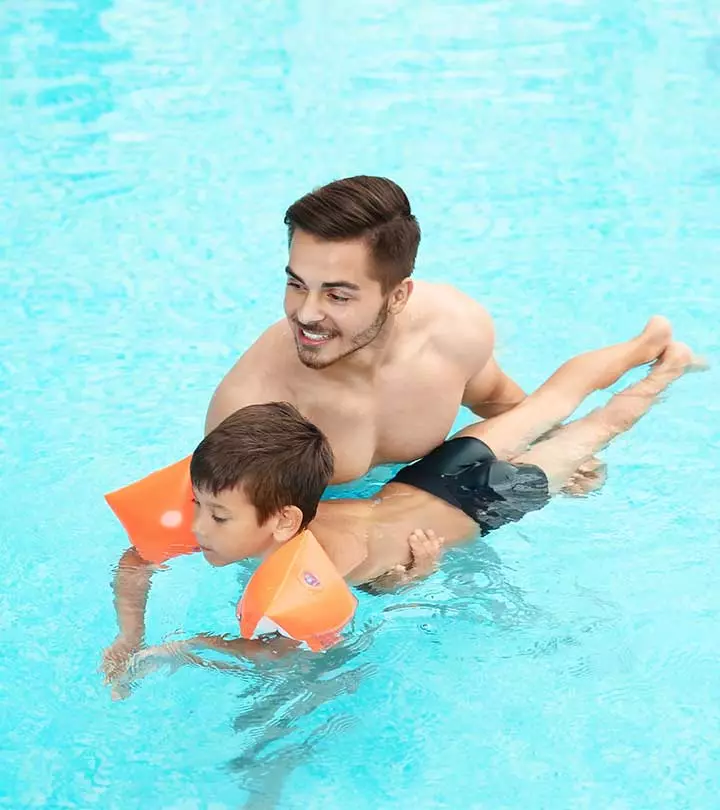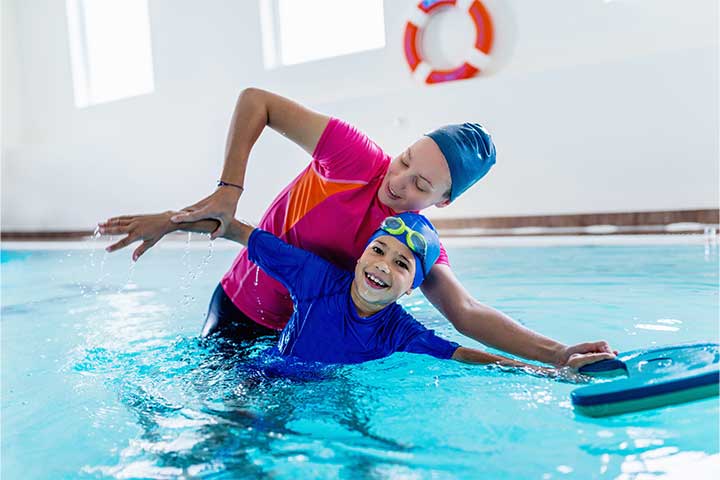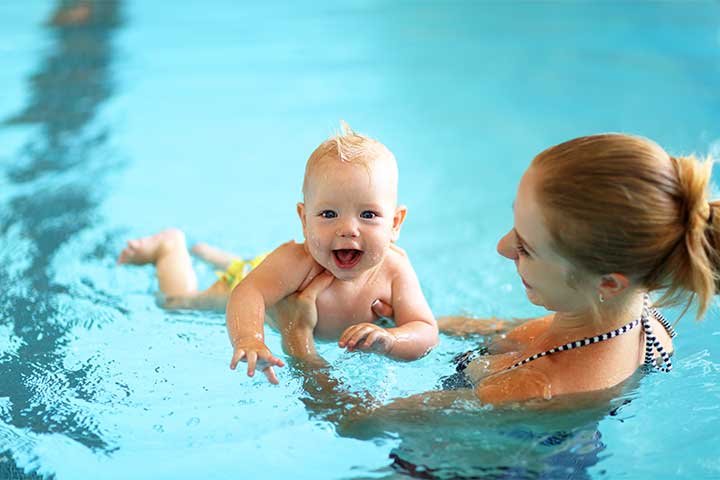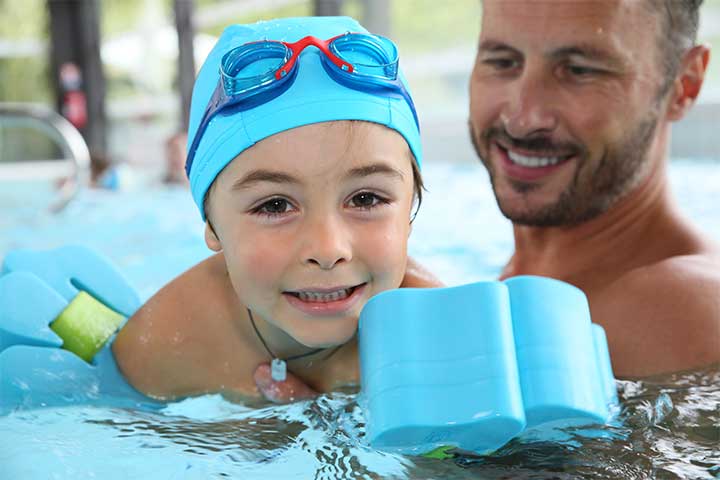
Image: Shutterstock
If you are a parent of a kid who loves playing in water, then this article is for you. A lot of children really enjoy their time in the water, indulging in splashing around and having a good time. However, as a parent, it is your responsibility to ensure that they remain safe in the water. In this article, we’ll delve into the key water safety considerations for babies, including potential drowning locations, safety precautions, and tips for safeguarding your little one. Read on to know more!
Where Can Drowning Happen?
Image: Shutterstock
Drowning can occur in various water sources, and it’s essential to be vigilant wherever there’s water around your baby:
1. Pools
Whether it’s a backyard pool, community pool, or hotel pool, these are common places where drowning incidents involving children happen. Abiding by pool safety measures are critical.
2. Bath Tubs
Babies can drown in even a few inches of water, so never leave your baby unattended during bath time.
3. Natural Bodies Of Water
Lakes, rivers, ponds, and the beach pose significant risks. Babies should always be closely supervised in these environments.
4. Bathroom Toilets
Toilets can be fascinating for curious little ones but can also be dangerous if your child is left unattended.
How Do I Keep My Baby Safe Around Water?
Image: Shutterstock
Ensuring your baby’s safety around water requires diligence and proactive measures:
1. Supervision
Always keep a close eye on your baby when they are near water. It only takes seconds for a child to get into trouble in the water.
2. Pool Fencing
If you have a pool at home, install a four-sided fence with a self-closing, self-latching gate to keep your baby away from the pool area when it’s not in use.
3. Swim Lessons
Consider enrolling your baby in formal swim lessons with a certified instructor once they are old enough, typically around 6 months or when they can sit up.
4. Floatation Devices
Use appropriate floatation devices designed for infants and ensure they fit properly. However, never rely solely on these devices for safety.
What Do I Need To Be Aware Of Once My Baby’s Crawling?
Image: Shutterstock
As your baby becomes more mobile, their curiosity can lead them to water-related hazards:
1. Secure Access
Ensure doors leading to pools or other water sources are securely locked or have alarms to alert you if they are opened.
2. Safety Covers
Use safety covers for pools and hot tubs when they are not in use.
3. Keep Bathrooms Safe
Install toilet locks to prevent access to the toilet. Consider a baby gate to keep your baby out of the bathroom when unsupervised.
How Much Water Can It Take For A Child To Drown?
Image: Shutterstock
It’s a common misconception that drowning only occurs in deep water. In reality, it takes very little water for a child to drown. Children can drown in as little as one inch of water, and it can happen quickly and silently. This underscores the importance of constant supervision, even in seemingly harmless situations like bath time or a kiddie pool.
How Do Babies Respond If They Fall Into Water?
Babies do not have the ability to float or swim instinctively like some animals. Instead, they may involuntarily gasp, inhale water, and become submerged. It’s crucial to understand that a baby’s response to falling into water can be silent and quick, making constant supervision imperative.
What Should I Do If My Baby Swallows Water?
If your baby swallows water while in a pool or any other water source, it’s essential to remain calm. Monitor your baby closely for any signs of distress, difficulty breathing, or coughing. If you notice any concerning symptoms, seek medical attention immediately. Even if your baby appears fine initially, it’s wise to consult with a healthcare professional to ensure their well-being.
Are There Any Flotation Devices Which Are Recommended?
Image: Shutterstock
When it comes to flotation devices for babies, it’s crucial to choose ones that are specifically designed for their age and size. Look for US Coast Guard-approved life jackets or personal flotation devices (PFDs) made for infants. Remember that a flotation device is not a substitute for close supervision.
When Should My Baby Learn To Swim?
Formal swim lessons can begin around 6 months of age or when your baby can sit up. These classes, led by certified instructors experienced in teaching infants and young children, can introduce your baby to the water in a safe and supportive environment. While these lessons are beneficial, they do not replace the need for vigilant supervision, as babies and young children should never be left unattended around water, even if they have received swim instruction.
Water safety for babies is an extremely important aspect of parenting. It requires constant vigilance, proactive measures, and a thorough understanding of potential risks. By implementing safety measures, staying informed, and maintaining unwavering supervision, you can create a secure environment for your baby to enjoy the wonders of water while minimizing the risks associated with aquatic activities. Remember, a well-prepared and watchful parent is the most crucial component in ensuring your baby’s water adventures remain both enjoyable and safe.

















